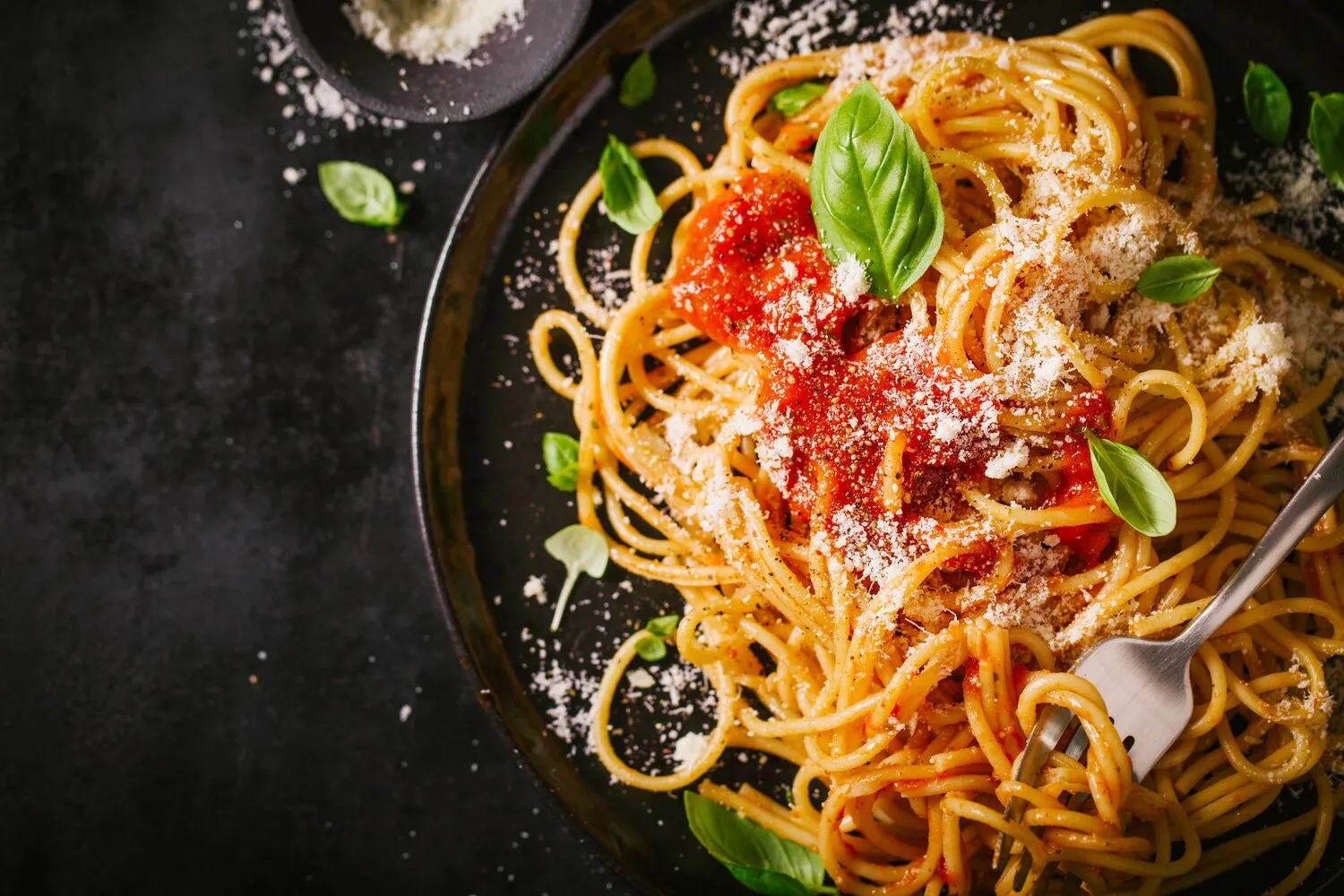
Pasta
al Dente serves a variety of pasta dishes.
Nutrition Facts
* The % Daily Value (DV) tells you how much a nutrient in a serving of food contributes to a daily diet. 2,000 calories a day is used for general nutrition advice.
al Dente
Pasta's history is long and complex. While there's debate about its exact origins, the earliest evidence points to noodles in Asia. However, modern pasta, as we know it, developed in Italy, particularly in Sicily, influenced by Arab traders who brought dried noodles. Over centuries, regional variations evolved, using local ingredients and techniques. The standardization of pasta shapes and cooking methods accelerated during the Renaissance and further developed with industrialization.
Pasta is deeply ingrained in Italian culture and is much more than just food; it's a symbol of family, tradition, and regional identity.
Family Meals
Pasta dishes are often the centerpiece of family meals, especially on Sundays. Preparing and sharing pasta is a communal activity that strengthens family bonds.
Regional Variations
Each region of Italy boasts unique pasta shapes and sauces, reflecting local ingredients and culinary traditions. This regional diversity is a source of pride and identity.
Simplicity and Quality
Italian cuisine emphasizes simple, high-quality ingredients. Even the simplest pasta dish can be incredibly flavorful if made with fresh, well-sourced ingredients.
Pasta dishes are incredibly diverse, showcasing a wide range of flavors. The core flavor profile depends heavily on the sauce and accompanying ingredients, but a common element is a balance of savory, umami, and sometimes a touch of sweetness or acidity.
The base flavor often comes from tomatoes (fresh or canned), garlic, onions, olive oil, and herbs like basil, oregano, and parsley. Meats such as beef, pork, sausage, or seafood contribute richness and umami. Cheese, particularly Parmesan, Pecorino Romano, and ricotta, adds salty and creamy notes. Other ingredients like vegetables (mushrooms, zucchini, peppers) or spices (chili flakes, black pepper) provide additional layers of flavor. Al dente cooking ensures the pasta itself has a slight bite, contributing to the overall textural experience. Different shapes complement different sauces; long strands work well with oil-based sauces, while shorter shapes are better with thicker, chunkier sauces.
Cook Pasta Al Dente
Al dente means 'to the tooth' in Italian. Cook the pasta until it is firm to the bite, not mushy. Check for doneness a minute or two before the package instructions suggest.
Use Enough Salt
Salt the pasta water generously – it should taste like the sea. This seasons the pasta from the inside out.
Reserve Pasta Water
Before draining the pasta, reserve about a cup of the starchy cooking water. This can be added to the sauce to help it cling to the pasta and create a creamy emulsion.
Combine Sauce and Pasta
Don't just pour the sauce over the pasta. Toss the cooked pasta in the sauce for a minute or two before serving to allow the flavors to meld together.
Explore additional Italian dishes and restaurants
Explore ItalianDiscover top dining spots and culinary experiences in Klagenfurt.
Explore KlagenfurtLearn more about the food culture, restaurant scene, and culinary heritage of Austria.
Explore Austria
